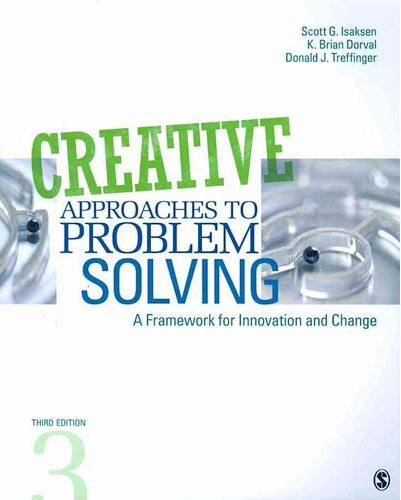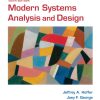Test Bank for Creative Approaches to Problem Solving A Framework for Innovation and Change, 3rd Edition, Scott G. Isaksen, K. Brian Dorval, Donald J. Treffinger,
$35.00 Original price was: $35.00.$26.50Current price is: $26.50.
Test Bank for Creative Approaches to Problem Solving A Framework for Innovation and Change, 3rd Edition, Scott G. Isaksen, K. Brian Dorval, Donald J. Treffinger,
Instant download Test Bank for Creative Approaches to Problem Solving A Framework for Innovation and Change, 3rd Edition, Scott G. Isaksen, K. Brian Dorval, Donald J. Treffinger pdf docx epub after payment.

Product details:
This text is the most comprehensive and contemporary overview and description of Creative Problem Solving (CPS) available today. Friendly and highly practical for a broad base of researchers and practitioners, the book provides a framework, language, guidelines, and set of easy-to-use tools for understanding challenges, generating ideas, and transforming promising ideas into action.
Table of contents:
Chapter One: Creative Approaches to Problem Solving
Introduction
What is Creativity?
Characteristics of Creative People
Operations Within the Creative Process
Removing Blocks and Barriers
Creative Results and Outcomes
The Context for Creativity
What is Problem Solving?
What is a Creative Approach?
Linking Creativity and Problem Solving
A Framework for Change
Putting This Chapter to Work
Activities to Guide Reflection and Action
Chapter Two: Creative Problem Solving
Introduction
What is Creative Problem Solving?
The Origins and History of CPS
Personal Process Activity
The CPS Framework
Understanding the Challenge
Constructing Opportunities
Exploring Data
Framing Problems
Generating Ideas
Preparing for Action
Developing Solutions
Building Acceptance
Planning Your Approach
Appraising Tasks
Designing Process
The Heartbeat of CPS
Guidelines for Generating
Defer Judgment
Strive for Quantity
Freewheel
Seek Combinations
Brainstorming
Brainstorming is Not the Same as Having a Group Discussion
Brainstorming Includes Having Someone Lead the Session
Brainstorming Includes Recording All Options Generated
Brainstorming Involves Extended Effort
Brainstorming Supplements Individual Ideation
Guidelines for Focusing
Use Affirmative Judgment
Be Deliberate
Consider Novelty
Stay On Course
ALUo (Advantages, Limitations, Unique Qualities, and Overcoming Limitations)
Identifying the Advantages, Strengths, or Strong Points
Identifying Limitations or Areas for Improvement
Identifying Unique Qualities
Overcoming Limitations
Generating and Focusing Lead to Creativity
The Tools of CPS
Knowledge From Practical Experiences
Knowledge Derived From the Literature
A Solid and Explicit Conceptual Foundation Exists
There is Continuous Research and Development
Formal Courses Are Available
Courses and Programs Have Been Evaluated
Communities Exist to Advance Knowledge
Communities Exist to Advance Practice
There is a Documented Need
There is Experimental Evidence
Cps Has Been Widely Applied
Putting This Chapter to Work
Activities to Guide Reflection and Action
Chapter Three: Understanding the Challenge
Introduction
Understanding the Challenge in a “Nutshell�
Input
Processing
Output
What is the Constructing Opportunities Stage?
Generating When Constructing Opportunities
Opportunity Statements
Focusing When Constructing Opportunities
Constructing Opportunities – A Sample Application
What is the Exploring Data Stage?
Generating When Exploring Data
Information
Impressions
Observations
Feelings
Questions
A Tool for Exploring Data: 5WH
Focusing When Exploring Data
Identify Key Data
Exploring Data – A Sample Application
What is the Framing Problems Stage?
Constructing an Effective Problem Statement
Generating In Framing Problems
Ladder of Abstraction
Focusing When Framing Problems
Highlighting
Find the Hot Spots
Restate the Hot Spots
The Rest of the Story
Putting This Chapter to Work
Activities to Guide Reflection and Action
Chapter Four: Generating Ideas
Introduction
Generating Ideas in a “Nutshell�
Input
Processing
Output
What is the Generating Ideas Component and Stage?
Points to Remember About Idea Generation
The Generating Phase
Qualities to Consider When Generating Options
Using Generating Tools
Brainstorming With Post-Its®
Brainwriting
SCAMPER
Forced Fitting
Visually Identifying Relationships
Imagery Trek
Attribute Listing
Morphological Matrix
Choosing Appropriate Tools
Focusing in Generating Ideas
Selecting Hits Tool
The Rest of the Story
Putting This Chapter to Work
Activities to Guide Reflection and Action
Chapter Five: Preparing for Action
Introduction
Preparing for Action in a “Nutshell�
Input
Processing
Output
What is the Developing Solutions Stage?
Generating In Developing Solutions
Generating Criteria
Focusing in Developing Solutions
Choosing Tools for Focusing
The Evaluation Matrix
Prepare the Matrix
Complete the Matrix
Interpret the Results
Paired Comparison Analysis
Put Your Options In the PCA
Compare Each Pair of Options
Sum the Scores
Interpret the Results
Summarizing the Developing Solutions Stage
What is the Building Acceptance Stage?
Level of Involvement
Degree of Complexity
A Formula for Change
Generating in Building Acceptance
Generating Sources of Assistance
Generate Possible Assisters
Generate Possible Resisters
Generating Potential Action Steps
Identifying and Overcoming Limitations
Focusing in Building Acceptance
Sequencing Action Steps
Planning for Implementation
Implementation Checklist
Relative Advantage
Compatibility
Complexity
Trialability
Observability
Other Questions
Obtaining Feedback on Your Plan
The Rest of the Story
Putting This Chapter to Work
Activities to Guide Reflection and Action
Chapter Six: Planning Your Approach to CPS
Introduction
Planning Your Approach in a “Nutshell�
What is Appraising Tasks?
The People and Context Dimension
People
Context
The Content-Method Dimension
Content
Method
What is Designing Process?
Required Results From the Process
Needed Elements of the Method
Desired Involvement and Interaction
Constraints From the Context
The Rest of the Story
Putting This Chapter to Work
Activities to Guide Reflection and Action
Chapter 7: People as Creative Problem Solvers
Introduction
Ownership
Influence
Interest
Imagination
Some Key Questions About Ownership
Diversity
Problem Solving Style
Orientation to Change
The Explorer Style
The Developer Style
Manner of Processing
The External Style
The Internal Style
Ways of Deciding
The Person Style
The Task Style
Moderate Preferences
Working Outside Your Preferences
Some Key Questions About Diversity
Task Expertise
Some Key Questions About Task Expertise
Using Information About People When Appraising Tasks
Apply Cps
Modify the Task
Find the Right People
Wait or Withdraw
The Rest of the Story
Putting This Chapter to Work
Activities to Guide Reflection and Action
Chapter Eight: the Context for CPS
Introduction
The Environment Conducive to Creativity
Support for Creative Productivity
Support for People’s Efforts
Enhance Satisfaction
Respond to Change
Knowledge Management
Are You Ready for Change?
Dimensions of the Climate for Creativity
Challenge/Involvement
Freedom
Trust/Openness
Idea-Time
Playfulness/Humor
Conflict
Idea-Support
Debate
Risk-Taking
Implications of Understanding Climate
History
Are You Willing to Manage Change?
Are You Able to Move Forward?
Using Information About Context When Appraising Tasks
Apply CPS
Modify the Task
Modify the Context
Wait or Withdraw
The Rest of the Story
Putting This Chapter to Work
Activities to Guide Reflection and Action
Chapter 9: The Role of Content
Introduction
What is Content?
The Role of Content In the System
Novelty: What Kind of Novelty Do You Need?
Size: How Great An Impact Do You Want?
Breadth of Impact
Depth of Impact
Leverage: Where is the Best Place to Focus Your Energy?
Identifying Key Leverage Points
Level of Importance
Level of Capability
Using Your Understanding About Content
Apply CPS
Modify the Task
Adjust Expectations You Hold for CPS
Use a Different Method
The Rest of the Story
Putting This Chapter to Work
Activities to Guide Reflection and Action
Chapter 10: Cps as a Change Method
Introduction
What is a Change Method?
Being Deliberate About Method
CPS as a Change Method
Do You Need the Purpose and Unique Qualities of CPS?
The CPS Framework
The CPS Tools
The CPS Language
How Confident Am I In Using CPS?
What Are the Benefits and Costs of Using CPS?
What Are the Benefits of Using CPS?
What Are the Costs of Using CPS?
Your Options From Exploring Methods
Apply CPS
Combine CPS With Other Method(S)
Wait or Withdraw
Putting This Chapter to Work
Activities to Guide Reflection and Action
People also search:
Creative Approaches to Problem Solving A Framework for Innovation and Change, 3rd Edition
Creative Approaches to Problem Solving A Framework for Innovation and Change, 3rd Edition pdf
Creative Approaches to Problem Solving A Framework for Innovation and Change
creative approach to problem solving examples
approaches to creative problem solving
design thinking a problem solving framework
Related products
Test Bank
Test Bank for Clinical Immunology and Serology A Laboratory Perspective, 3rd Edition: Stevens











